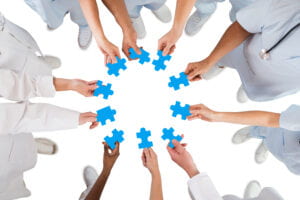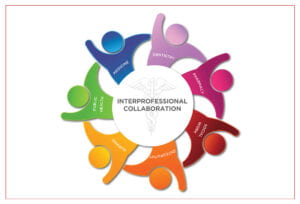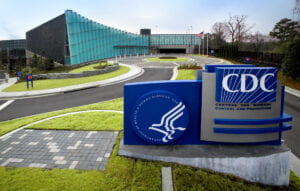
By Rick Valachovic, DMD, MPH, Clinical Professor and Director of the NYU Dentistry Center for Oral Health Policy and Management
Barbie Vartanian, NYU Dentistry’s director of advocacy and policy initiatives, remembers the day she first answered the question posed above. She was in a dental clinic helping answer the phones when a woman on the line requested an appointment. “I have twins and they’re autistic. Will you treat them?” she asked. “Well, sure. Why wouldn’t we?” Barbie replied. Then the caller told her numerous other dental practices had refused to book the appointment. “I hadn’t had Sam yet, but I just thought, ‘Of course! We’re health care providers. That’s our job.’”
Barbie’s teenage son, Sam, is profoundly autistic, so in the years since that call, she’s had her own share of challenges obtaining care for him, and she is not alone. According to the Centers for Disease Control and Prevention (CDC), one in six U.S. children has an intellectual or developmental disability (IDD), and one in four U.S. adults lives with a disability of some sort. According to one study, dental care topped the list of unmet care needs among children with special health care needs, “affecting substantially more children than any other health care need category.”
The Oral Health Center for People with Disabilities
NYU Dentistry is helping to fill this gap. In 2019, the College opened the Oral Health Center for People with Disabilities within our current clinical facilities. The Center’s staff is trained to ensure quality treatment and holistic care for people with disabilities and complex medical conditions, and the environment is designed to put them at ease. The dental operatories are larger than usual, providing 360-degree access to patients and space for their caregivers. There’s a bariatric bench to accommodate heavier individuals, and a reclining platform that allows patients in wheelchairs to receive care without leaving their familiar seating. A multisensory room with weighted blankets, special lighting, and videos on the wall provides a space where patients can become acclimated to the clinic environment.
“From there, we transition them into the dental care setting,” explains Robert Glickman, DMD, associate dean for clinical affairs and hospital relations at NYU Dentistry. “We are able to tailor the appropriate therapy, and the appropriate management of therapy, to the individual’s needs; we’re not limited by the facility’s structural configuration.”
In just three years of often pandemic-constrained operation, the Center has given almost 2,000 underserved patients a much-needed dental home, while also serving another critical function. “We want to ignite in our students a sense of wanting to help, and more importantly, to show them that this should be the routine approach to patient care, not something out of the ordinary,” asserts Robert, who is responsible for overseeing the Disability Center’s academic and clinical missions.
Barbie agrees. She has made it her mission to ensure that individuals with disabilities have access to oral health care. “What is needed to treat our population is a shift in mindset,” she told me.
Changing Attitudes Through Advocacy and Education
Last year, Barbie joined our team in the Center for Oral Health Policy and Management. In her current role, she works with Project Accessible Oral Health, an advocacy group she previously led, and other partners in the effort to improve oral health care for people with disabilities. “We’re seeing momentum like we’ve never had before,” she says.
NYU Dentistry is a leader in serving the IDD population, but we are not alone. Our dental school colleagues at the University of Pennsylvania, Touro University, the University of Michigan, and UTHealth in Houston are also committed to serving this community. The University of the Pacific Arthur A. Dugoni School of Dentistry is another pioneer in this area. Early in September, the school cohosted a two-day event with the Santa Fe Group on achieving oral health equity for people with IDD. My partner at the Center for Oral Health Policy and Management, Dr. Michael O’Connor, was among the presenters.
There’s also an effort being spearheaded by the American Academy of Developmental Medicine and Dentistry to draft a national curriculum on treating the oral health needs of people with disabilities. The idea is that any dental school will be able to take it off the shelf and implement it, providing consistency in what’s being taught across the country.
A 2018 change to the Commission on Dental Accreditation (CODA) standards for dental education programs, which asserts, “Graduates must be competent in assessing and managing the treatment of patients with special needs,” should incentivize programs to make use of the curriculum if they aren’t already addressing this topic. Dental educators in New York State can also take part in Unit Zero, a free, eight-credit, NYU Dentistry continuing education program on caring for people with disabilities. We’re offering the two-day program twice this fall, with support from the Mother Cabrini Health Foundation.
Persistent Barriers
Despite these advances, barriers persist. Sadly, one of these is the stigma and bias associated with treating people with IDD. Steve Perlman, DDS, a clinical professor of pediatric dentistry at the Boston University Goldman School of Dental Medicine and a pioneer in this field, once told Barbie people would say to him, “You must not be a great dentist if you’re treating these people.” As Barbie and others can testify, the people who have dedicated their careers to treating populations with special needs are not only great dentists; they’re also great human beings.
One I’ve come to know and admire is Rita Bilello, DDS, an NYU Dentistry alum and chief executive officer of Metro Community Health Centers, Inc. (MCHC), which runs a federally qualified health center here at NYU Dentistry. Rita and MCHC specialize in serving people with IDD. Rita gained exposure to the medical complexities faced by this population during her general practice residency. When she entered private practice, she became the go-to dentist whenever a person with IDD walked through the door.
“I used to get really, really annoyed at my fellow dentists because they would come to me and ask me for the number at the hospital so the patient could be put to sleep prior to the dental procedure,” she told me. “I’m like, ‘There’s no reason why you need to send this person to a hospital. Just do it.’”
In addition to some dentists’ reluctance to provide care, there’s also the issue of payment. Many people with disabilities are insured through Medicaid. Too few providers accept this insurance (see my last post), and those who do are not compensated for the extra time it takes to provide respectful and compassionate care to these patients.
A Better Model of Care
Thanks to MCHC’s presence on the NYU Dentistry campus, the Center is preparing the next generation of dentists and dental hygienists to treat people with IDD in an integrated care environment. Rita views this delivery model as especially beneficial to the patients she treats. “You can’t separate out one component of a human being and think that you’re going to have overall success in taking care of them,” she says. “By the time a patient gets to me for a dental issue, they’ve usually been to the ENT and the psychiatrist because they’re hitting their head and they’re refusing to eat, and you know what? Sometimes the problem is something as simple as a toothache.”
Having the Center and MCHC in the same building makes it easy for students to collaborate with medical staff on behalf of the Center’s patients. In the process, we hope they will come to share Rita’s enthusiasm (and mine) for integrated care delivery.
The practice of providing integrated, compassionate care in facilities that can accommodate a wide range of patient needs is still in its infancy, but I’m confident others will adopt this approach. As Robert said to me, “If we were the only institution in the country providing this care, it would be a pretty good thing for people who live in our region, but our effort would be a failure. Our goal in establishing the Center is that other dental schools will try to replicate it.”
An oral and maxillofacial surgeon, Robert remembers vividly the times he was asked to perform extractions on people with IDD who arrived at the hospital in pain in the middle of the night. “To take somebody who doesn’t understand what’s going on, put them to sleep, and then wake them up with less teeth — and everybody’s saying, ‘Well, at least we got the infection out,’ — that’s a failure of the system,” he told me. “When we do a root canal at the Center on a patient who previously would have had that tooth extracted, that’s rather amazing to me.” With on-going advocacy efforts and the commitment of more dental schools to preparing their students to treat people with IDD, we may soon see the shift in mindset that could make it a matter of course.





